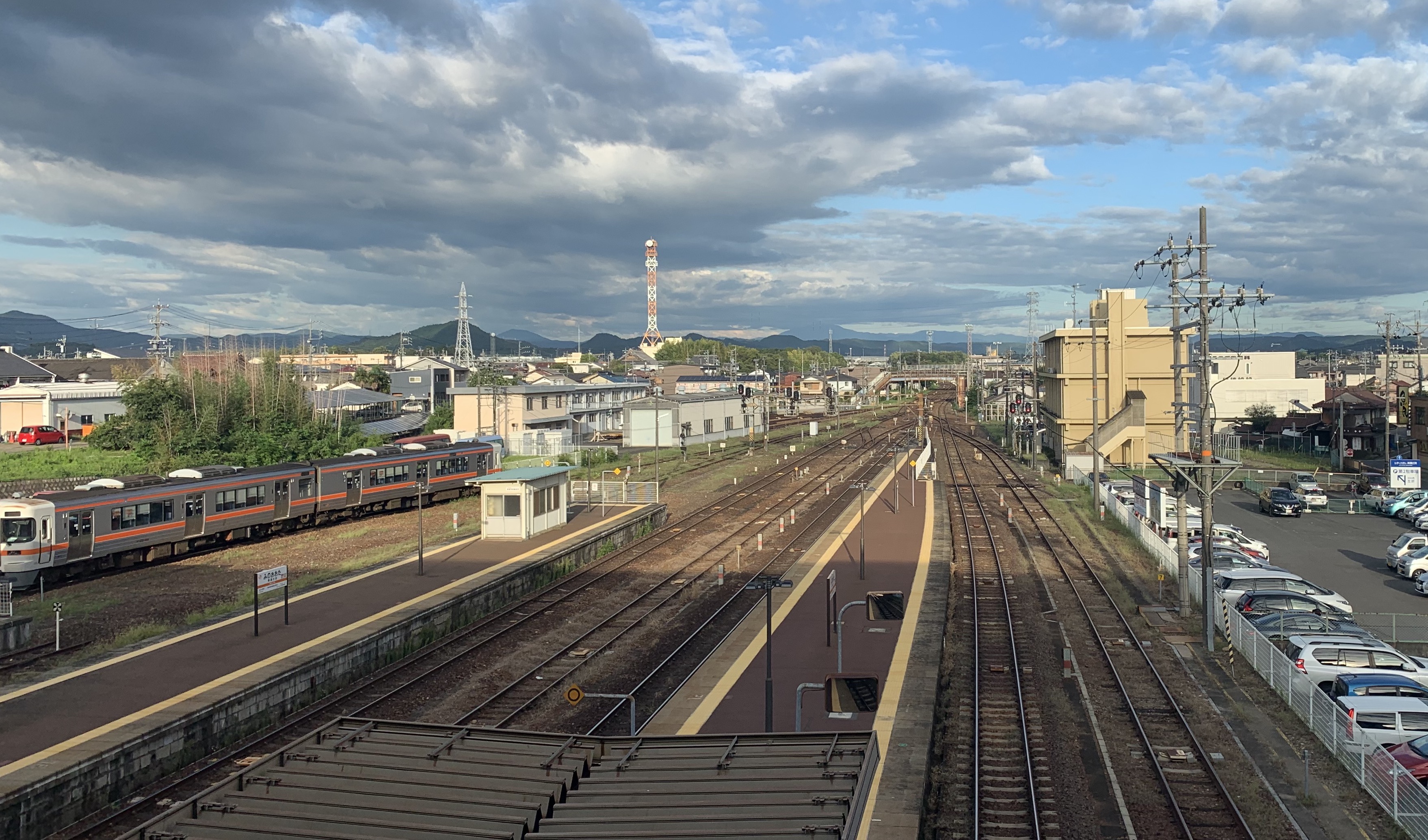Standing on a train platform outside Gifu I take stock of how far we’ve come. Far not in the sense of two about to be three trains this morning from Nagoya airport, or even the one flight from HKG prior. Nor do I mean far in that this is our fourth trip to Japan in twenty nineteen. Far in the sense I meant when I volunteered to live in the happening world.
I’ve come to recognize the burst of confusion that comes with this heightened motion. After forgetting my Guandong hotel room number twice my first trip with my last job, a whirlwind tour of sixteen suppliers in four days, I’ve become more careful. I pack lighter, of course, and with more regular repetition, to ease the memory requirements. And I try, always, to require less.
On Saturdays the train we are waiting for comes every thirty minutes, so we have some time to think. We stand on the platform in the shade and eat bread from a shop at the last train station, washing it down with tea from a vending machine. There are a few locals also waiting, though most have read the train schedule and will walk up to the platform closer to the train’s arrival. This station is of an older era, where tickets can be bought en route in cash, not just by Suica at the upstairs gates. The station is quiet save for a through train that clatters past on the center tracks without slowing. This is a diesel line and the train’s exhaust doesn’t help the heat. Early September is still warm here, though nothing like the heat of August in Tokyo.
Landing this morning in Nagoya Tokyo felt like a long time ago. Thinking back to that rooftop in Hatsudai is what started this reflection on pace. Since we were in Tokyo, the last time I wrote here, I have been to Taiwan. It was my first time in the country, seeing a Taipei night market, having lunch in the mountains to the north, and then wandered Taichung the following evening. Since we were in Tokyo I have also spent most of a week working in San Francisco, riding Jump bikes to the office and climbing gym. Since Tokyo, I’ve spent five separate days in Shenzhen and Dongguan, days of walking borders and visiting suppliers. All these places, not yet correctly memorized or considered, I’ve seen since our trip to Tokyo that is both the prior post and exactly one month ago.
These bursts of motion come with the start of new things. Since the last unexpected end I’ve been in motion more than not, leaving behind a list of adventures that seems absurd when recounted. As my first summer in Asia since two thousand eight, I’m enjoying the luxury of short flights and high speed train rides more than long trans-Pacific loops. Yet I’ve done those too, three times since June. As records go I can’t yet tell where twenty nineteen will end in places slept, but I know how it will feel: like the blur of motion.
I still love the Shinkansen. For this boy from New York, the first Shinkansen was a miracle, something pulled fully realized out of an alternate world. Riding the new high speed rail link between Kowloon and Shenzhen at least once a week now, I appreciate it just as much. Fifteen minutes to Shenzhen rather than the previous hour is quite a change. An hour and a half direct link to Shaoguan is amazing. The speed, ease, and comfort with which we transition from place to place remains the same kind of miracle it was at eighteen. In this way it has been a gift, these past weeks, to go on a small tour of the region’s high speed rail lines. I’ve ridden Taiwan’s line from Taipei to Taichung and back. I took the China high speed rail from Hong Kong to Shanghai, and the original Shinkansen line from Osaka to Tokyo, all since July. Finishing this piece in Osaka again, I can now add the Shinkansen from Nagoya to Osaka to the list, the same line as a month prior in the opposite direction.
As with many things, it turns out the alternate world that I discovered at eighteen wasn’t some fantasy place of imagination. It was simply a country that invested in non-car transportation infrastructure. To my delight there are several such places within easy reach of our new home.
Which is the largest change from earlier moments where I felt part of the happening world. I no longer bust down broken streets in LA in a borrowed Mini, nor do I drive hours along the border highway just east of Tijuana. Instead I walk down the dusty streets of Bao’an to the new line 11 metro stop, and then transfer at Futian to the high speed rail back to Hong Kong.
There are cars, of course, like the one that will retrieve me shortly for a visit to a factory outside Osaka. Cars have not disappeared, but their role has shrunk so much in this new life. They now serve as occasional connectors between rail and factory, factory and hotel.
Living, as we do, in a world where lists of places seen and slept are a bundle of cities that do not share countries, it’s the long-term trends that stand out, not each individual place. On my second visit to this Osaka hotel I know where the subway entrances are. This summer I have been to San Francisco three times and only in cars as a means of exiting the airport or crossing the Bay Bridge. Once again the metal chariot is not gone, the age of the automobile is not over. There is a different way, though, and we’re finding it, while remaining all the while in constant motion.
Cue again the happening world.
